
Rebecca Page's Brielle Blouse
I had the immense pleasure of getting to sew up Rebecca Page’s Brielle Blouse and I absolutely love how gorgeous the finished blouse is. I love how the instructions holds your hand to allow you to easily figure out how to sew the blouse. Starting the pattern I was excited to find out how to make pleats, work with lightweight fabric for the first time, and learn how to properly hide my seams with bias tape and french seams. I love the finished blouse, but I also love all the facets of garment creation I learned while following along with the instructions that came with the pattern.
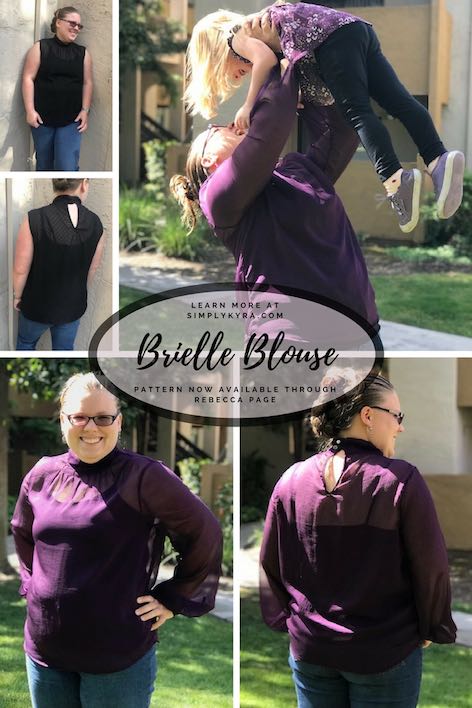
What you need to get started
- Brielle Blouse Pattern
- Bundle with all the below versions
- Ladies
- Childs
- Dolls
- Lightweight fabric – I bought mine from fabric.com
- you could use any cotton fabric though a heavier fabric would be boxier
- Sewing machine and thread – I made this without a serger or coverstitch machine
- Chalk made it easier to mark the pleats on my fabric
- Sewing clips – I found my pins fell out of the chiffon easily
- Iron to make the seams, pleats, and hem easier and look nicer
- Scissors and pattern weights – though I’ve heard a rotary cutter is recommended
- (Optional) Buttons – 2 for sleeveless (at the collar) and 6 if you’re adding the sleeves (two for the collar and two for each sleeve cuff). If you want the buttons closer together you might be able to go with three buttons at each spot if they aren’t too large.
- For my black sleeveless blouse I used no buttons and instead used a two hooks and eyes I had on hand to keep my collar fastened
- Bias tape – I made my own so the color, fabric type, and weight matched
Figuring out Fit
The first time I ever made a first draft outfit (or more accurately called a muslin or toile) was for a knit pattern so the muslin wasn’t accurate as there wasn’t enough stretch to the muslin fabric to be an accurate portrayal of the garment. This time the pattern called for a woven fabric so I decided to start out by making a muslin in my measured size out of muslin fabric. I knew I was going to use one of the recommended lightweight and drapey fabrics yet I knew the muslin fabric would make a decent depiction of the finished garment since the pattern warned that an 100% cotton fabric would make the blouse look boxier.
The first muslin I made I treated as a trial run of the actual garment and followed the instructions to give myself a chance to practice the pleats and french seams as I hadn’t worked with either before. It was the perfect opportunity to fully understand the garment especially since my blouse was going to be made from chiffon and I hadn’t sewn with such a lightweight fabric before. When it came to the bias tape I used a cotton woven tape I had on hand from making the girls’ bubblegum dresses as it was similar enough to the muslin fabric. It worked great as the places that needed bias tape were more about the practice of the instruction’s step than the actual fit or look of the finished garment. As I approached the end of the muslin I ended up skipping the sleeve cuffs and only started the first part of the collar as I was running out of sewing time that day and had sewn enough to figure out the fit of both the bodice and upper arms.
After I finished the muslin I found it to be a bit tight so I decided to make a second muslin one size larger as a comparison. This time around I did a quick sew with just the front and back bodice pieces and the top half of the sleeves (as I was running out of muslin fabric). I included all the steps that would affect the overall fit (like the pleats) and simplified some of the other steps (like doing a simple quick seam instead of a french seam though I increased the seam allowance to account for the difference).
While comparing the fit of the two muslins I decided to go with the smaller size and add a full bust adjustment to the front bodice piece. I could have also graded out at the waist but decided as the blouse was billowy I would leave that part as is.
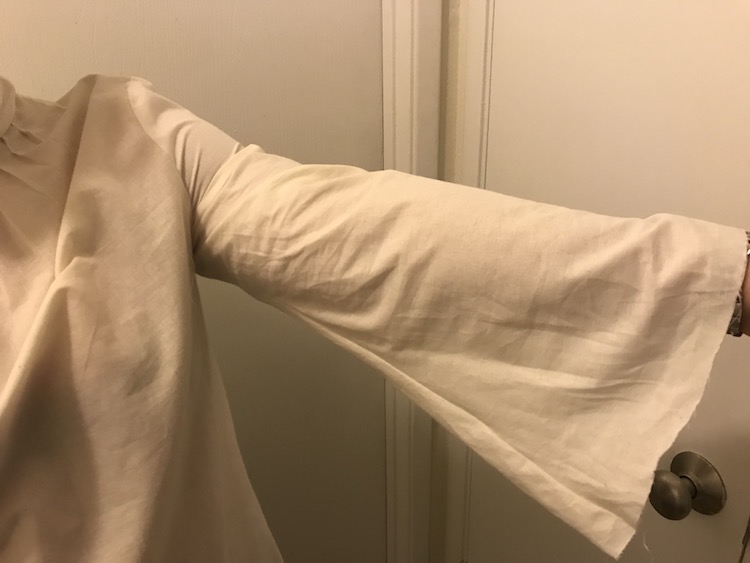
Full bust adjustment
I used a hack I found on a blog post to help confirm I needed a full bust adjustment. The hack has you cut two Xs over the apex of your bust and then based on how much (or little) the fabric gaps open at the X determines whether you need a full bust adjustment and can give you rough estimate on how large the adjustment should be. I can’t remember for sure but I think if you can overlap the pieces then you need a small bust adjustment. I tried but was unable to find the post again to link to, but if you find it let me know so it can help someone else. I then went on to use the tutorial from Helen’s Closet (How to do a quick full bust adjustment without any darts) to do a simplified full bust adjustment to the front pattern piece as I didn’t need a large adjustment. I used some wrapping paper to trace the altered pattern piece out.
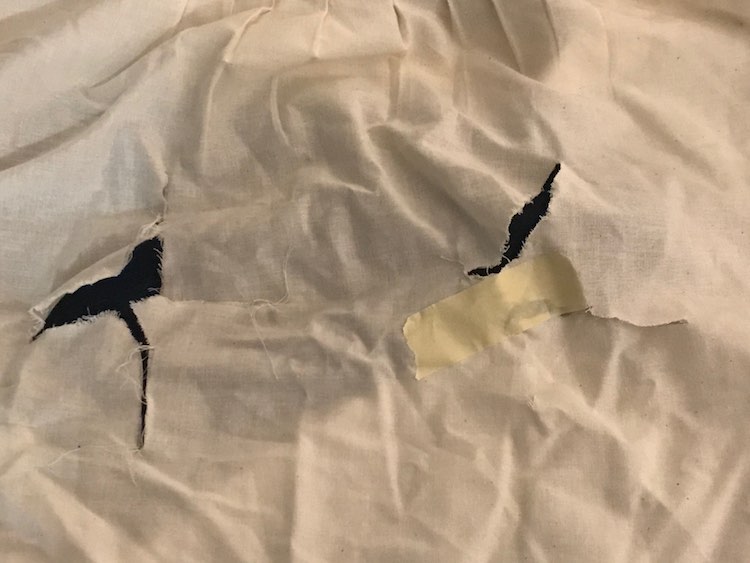
You can get the bundle including ladies, childs, and dolls sizing or get them individually: ladies (XXS-5XL), girls (newborn to 12 years), and the 18 inch dolls.
Black sleeveless polka-dotted chiffon
Most of the tightness in the muslin was around my upper arms… so while I was still debating what size and alterations I should make to the pattern piece, I did what anyone chomping at the bit to create such a gorgeous blouse would do… I forged ahead by making the blouse sleeveless (an included option in the pattern) so I could ignore the upper sleeve tightness as there would be no sleeves to be tight. Before charging ahead I confirmed this by using masking tape to close the large Xs I cut in my muslin and ripping the sleeves off. It seemed to work, so off I went… especially since I was further justified in my choice by telling myself it would be a good test run in case the chiffon fit differently than the muslin fabric.
I loved both types of chiffon I bought from Fabric.com but I loved the plum chiffon just a bit more than the black so I decided to make this first attempt with the black polka-dotted chiffon just to be sure I’d still have enough plum chiffon for the sleeved version. After cutting out my pattern pieces I then cut a 45° angled swatch off the remainder and went on to make bias tape so it would match my blouse perfectly… and most importantly match the weight and drape of my blouse. I then sewed up the blouse according to the pattern’s instructions. This was still during testing so the armpit ended up a bit too low for the sleeveless version (and has since been fixed for the final version of the pattern) but overall it was gorgeous!
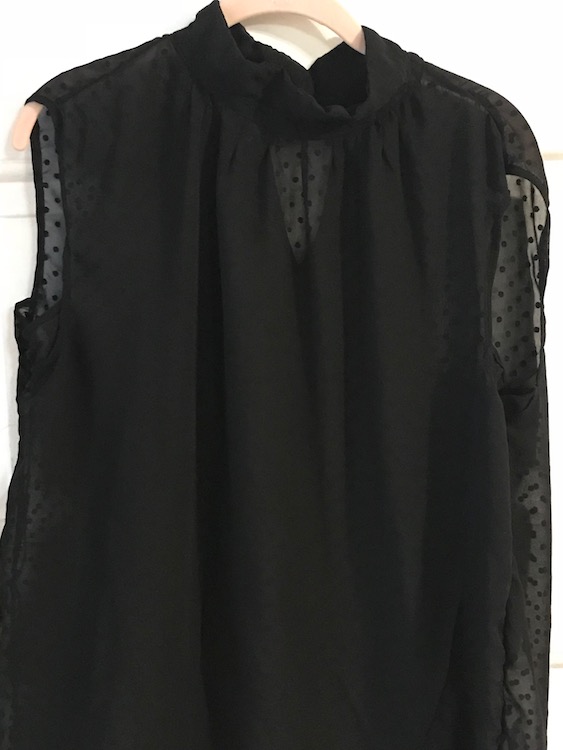
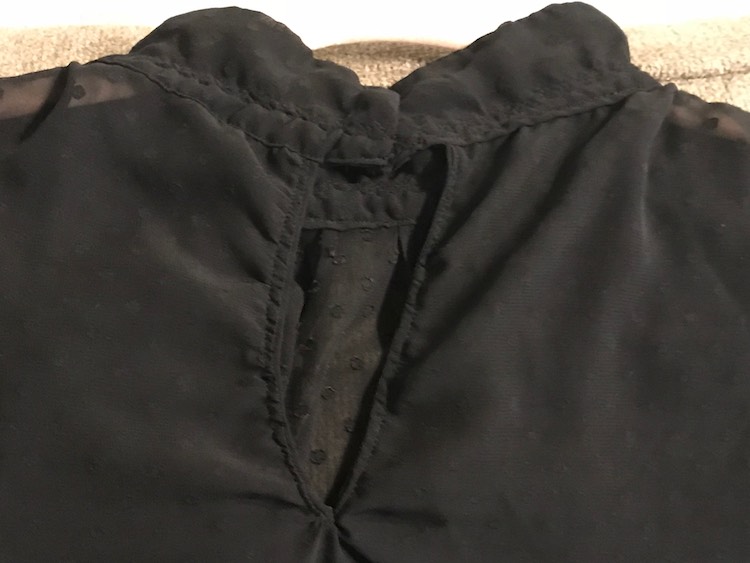
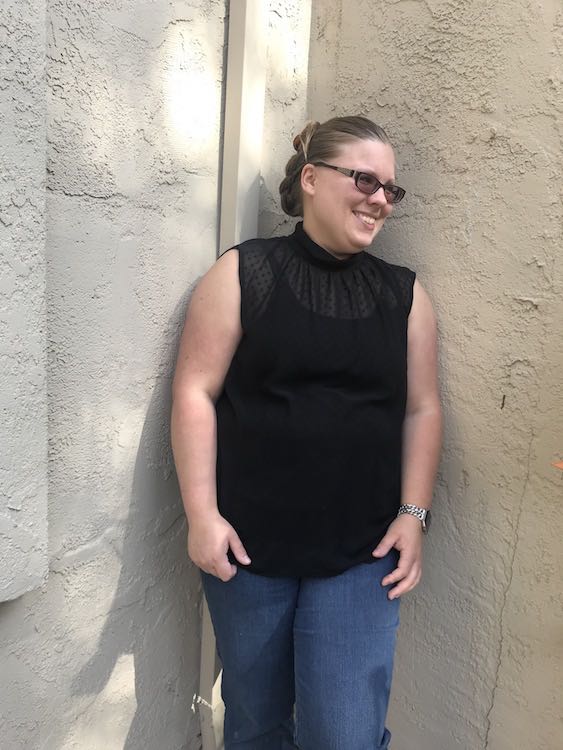
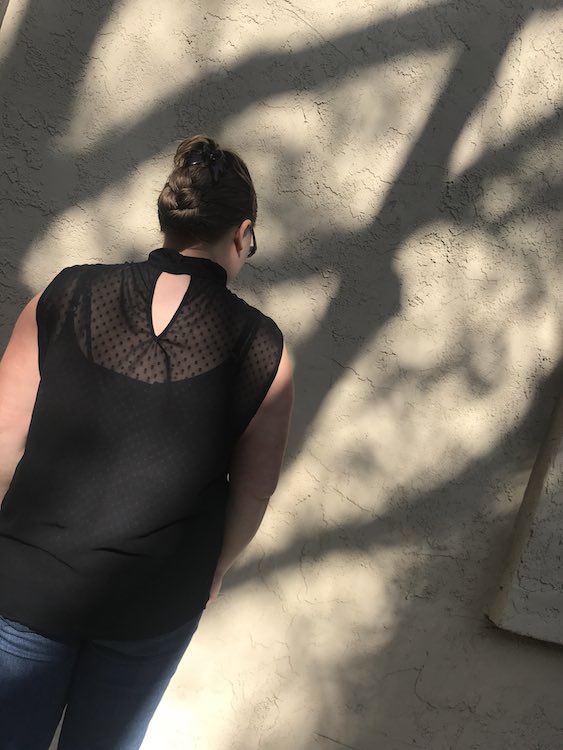
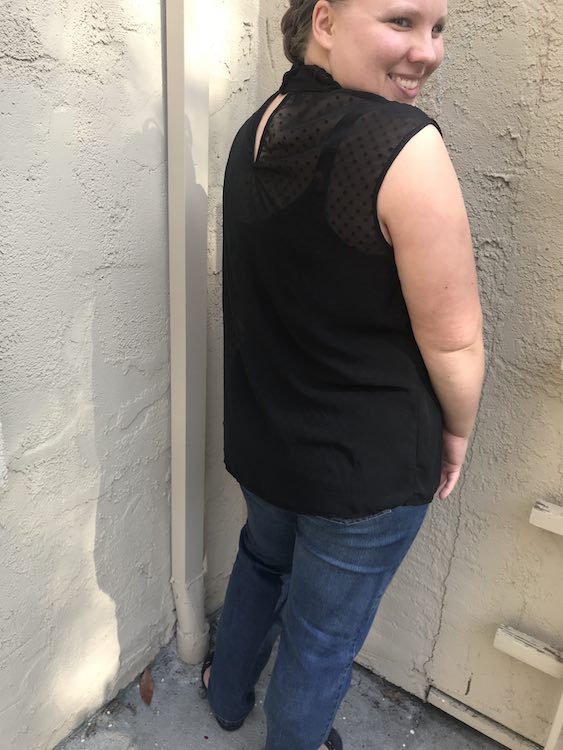
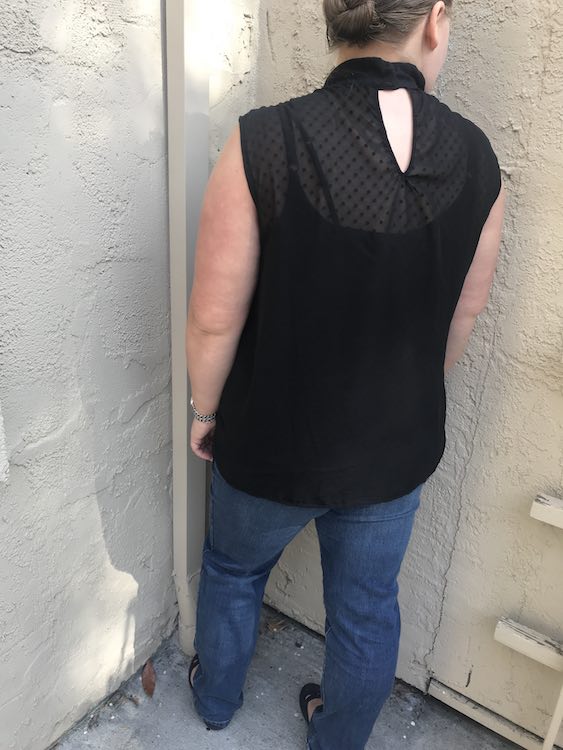
Of course with the photoshoot Ada decided she wanted in on the action! Zoey just happened to come along for the ride.
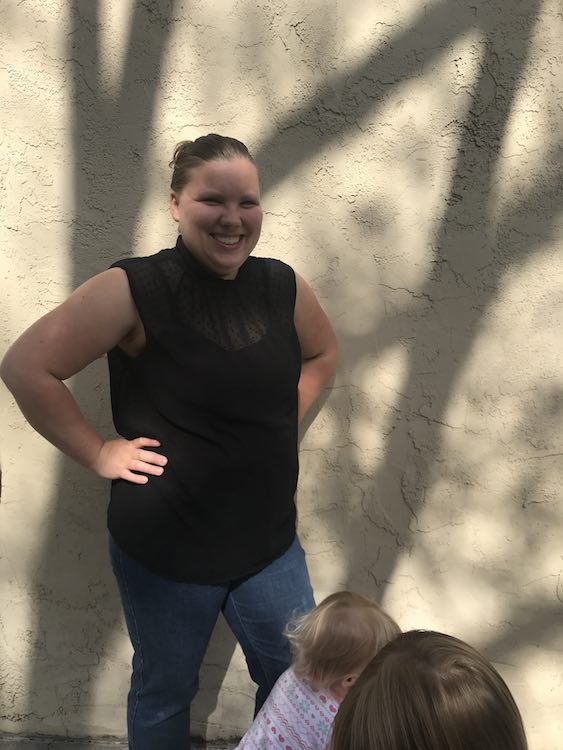
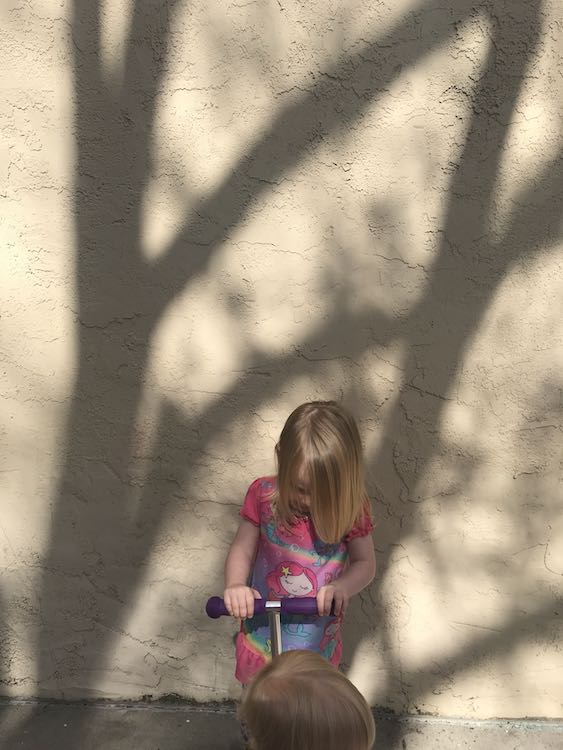
You can get the bundle including ladies, childs, and dolls sizing or get them individually: ladies (XXS-5XL), girls (newborn to 12 years), and the 18 inch dolls.
Two tone plum with billowy sleeves
After deciding to go with the smaller size (same as the black sleeveless version) and adding a full bust adjustment to the pattern piece it was time to cut into my preferred chiffon. Again, like the black, I cut out all the pattern pieces and then cut a swatch from the remaining fabric to make my matching bias tape. Though for full disclaimer I did debate for a second or more if the black bias tape from the previous blouse would look good with the plum. I again sewed up the pattern according to the directions. As my chiffon was see through I used bias tape along the keyhole opening on the back. I also wanted to use buttons with bias tape loops so I shortened the width of the collar a bit when I sewed it together. I absolutely love the billowy sleeves on this blouse and really wish I had also sewn up the black blouse with the sleeves! This blouse was comfortable going to the farmer’s market and the airy fabric allowed the wind to cool you down in the heat… a perfect compromise when you’re afraid a long sleeve will overheat you.
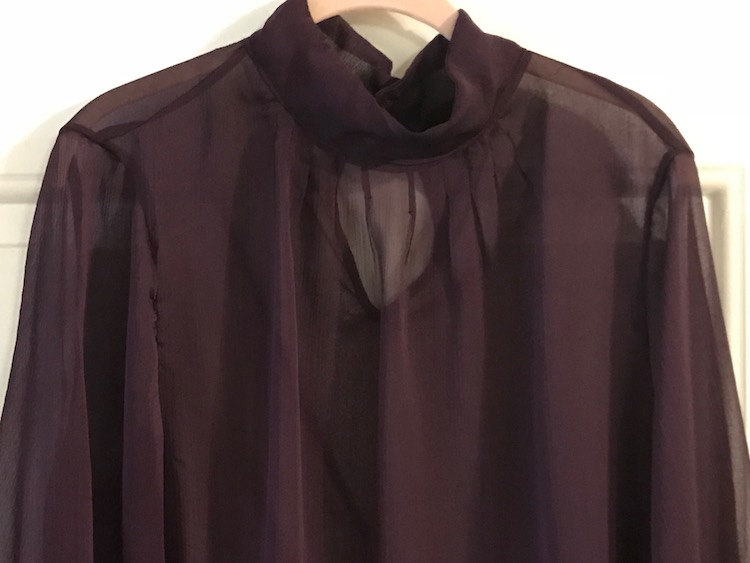
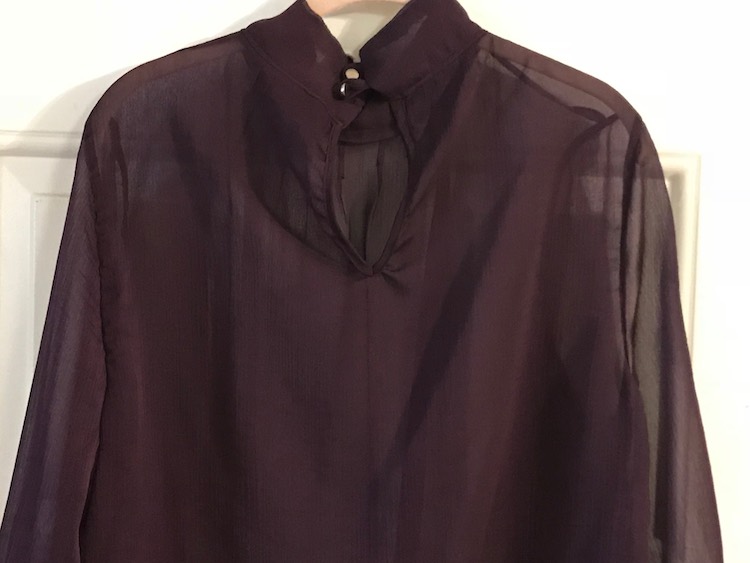
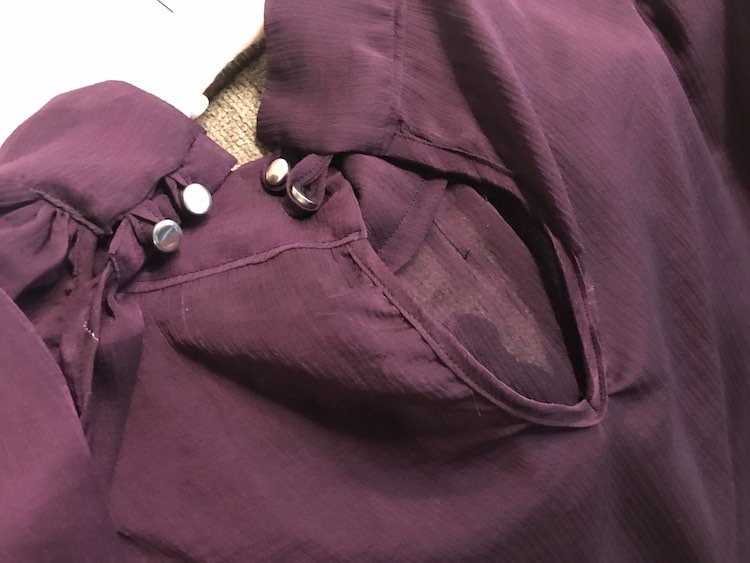
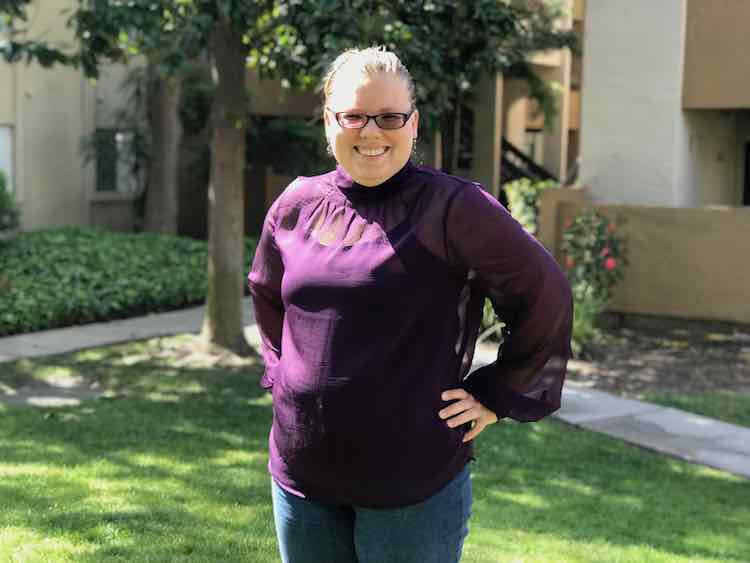
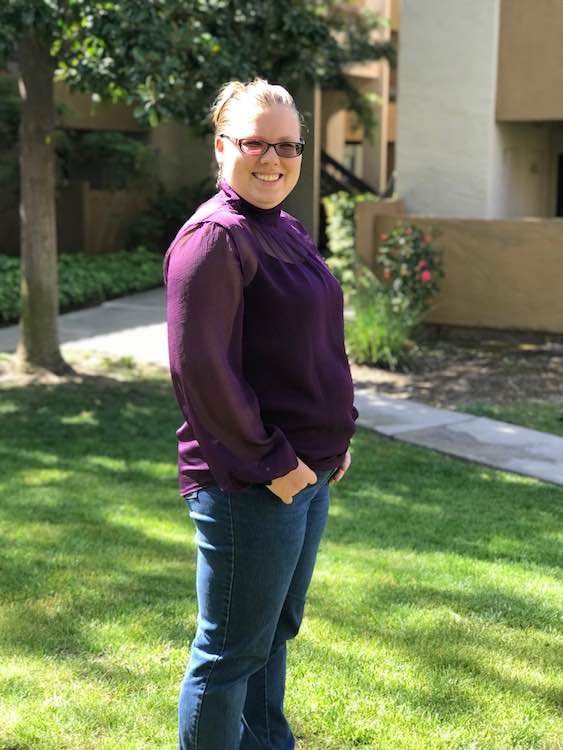
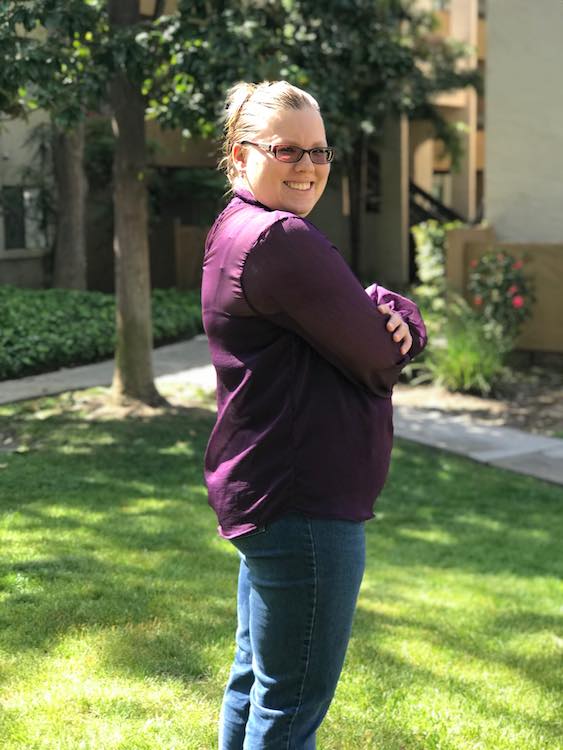
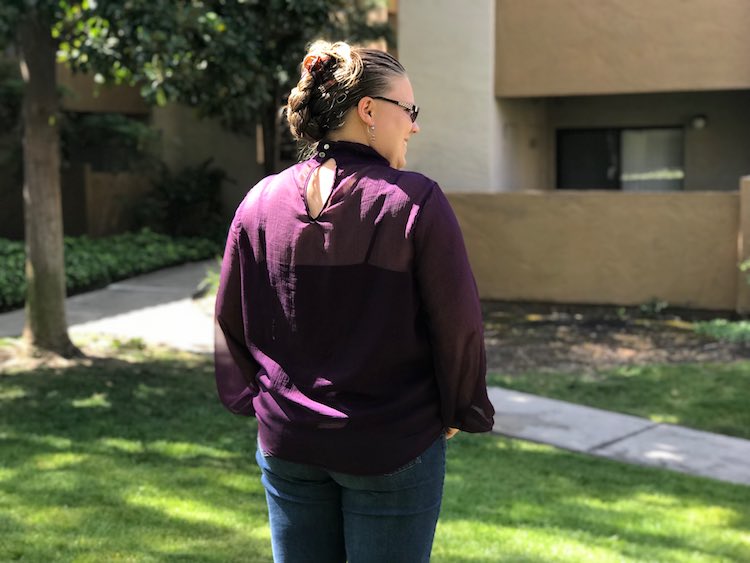
You still have enough range to lift your kid up!
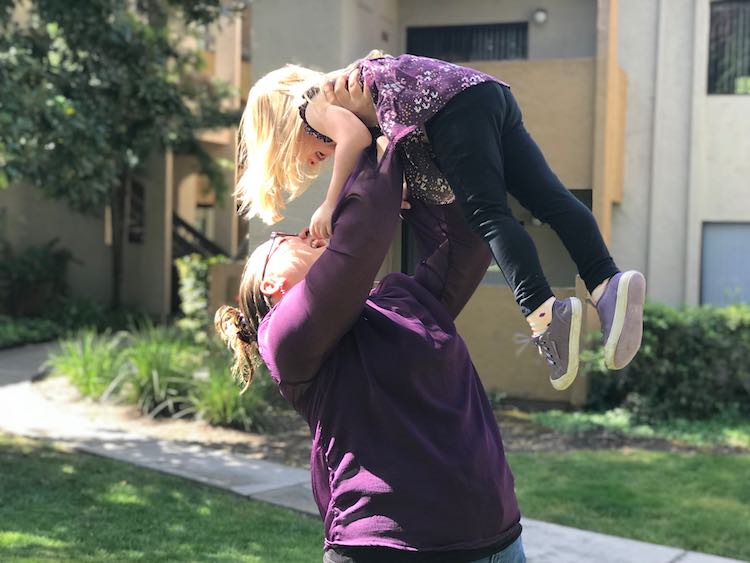
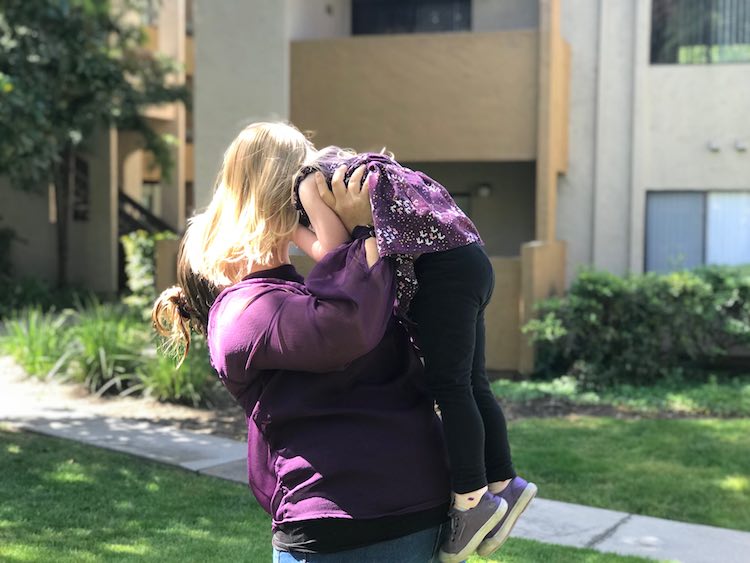
Tip
When marking the lines for the pleats I found tailor’s chalk worked better than my friction or disappearing ink pens. As the chalk had a wider tip I ended up marking the space between each set of pleats instead of each specific line. I then joined up the chalk edges when sewing my pleats together.
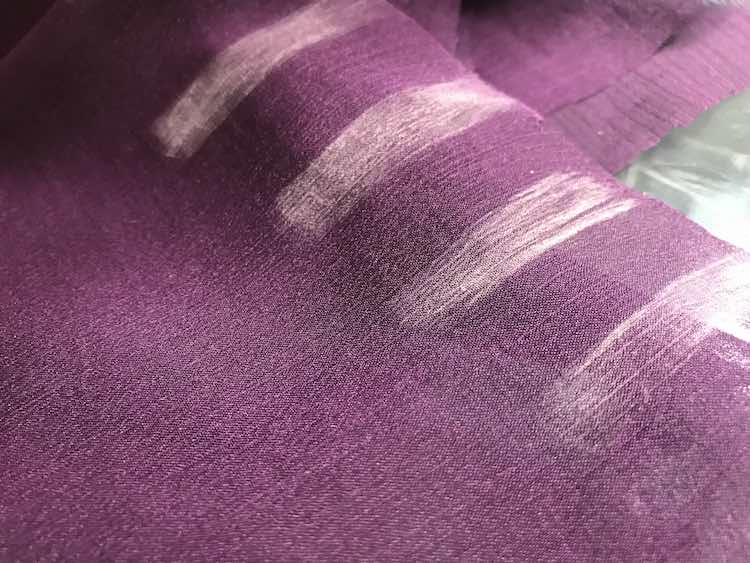
Words of warning
Be careful. With the fabric being so lightweight I ended up sewing some of the blouse into the collar… twice! Luckily I was able to use my seam ripper to remove the stitches without an obvious hole. I then sewed the seam I ripped open. So much for deciding to be adventurous with a decorative topstitch.
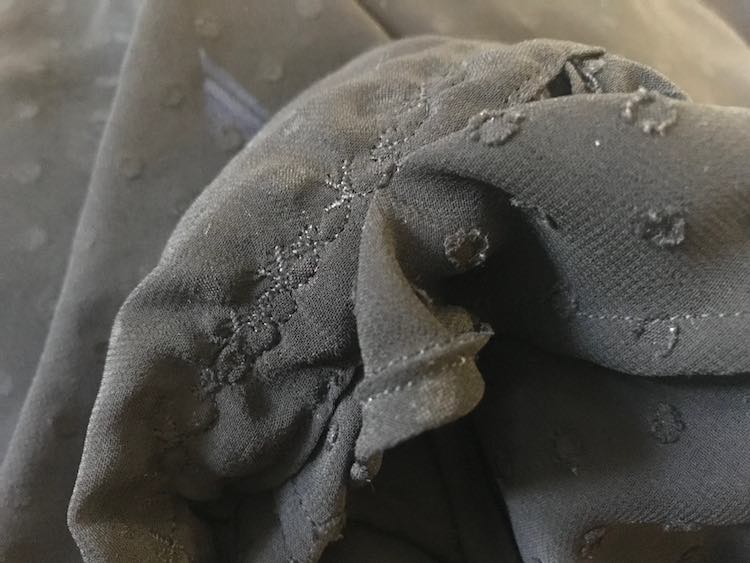
When making your bias tape be careful about what thread color you use. When I sewed up my plum bias tape I went with a white thread and then decided to go with black when I sewed my blouse. Because of the thread color choices I can see a spot where the strips of chiffon were sewn together in the making of the bias tape. It’s not too obvious unless you’re looking for it luckily and helps justify the fact I went with black thread to sew up the rest of the blouse.
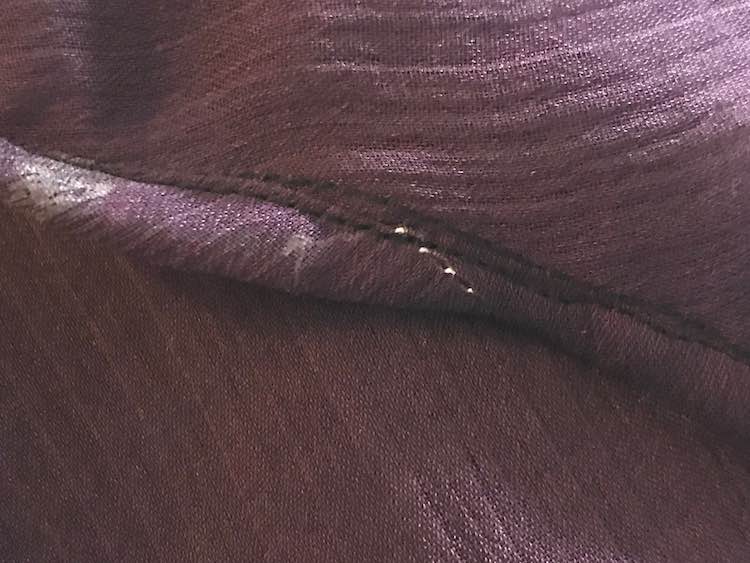
Conclusion
I absolutely love how gorgeous the finished blouse is! I used chiffon and sewed up both the sleeveless and the long sleeve blouse. My favorite style ended up being with the billowy and floating sleeves which goes amazingly when matched with the body of the blouse. The keyhole in the back is just the icing on the cake. In addition to the sleeved and sleeveless versions there are also several different alternatives, in addition to the buttons, for the collar and sleeve cuffs. The instructions go over each method in detail. If you’re using a more opaque fabric there are alternatives to the bias tape when finishing the keyhole back.
I absolutely loved how much I was able to learn and practice while sewing up this pattern. I’m not sure if a high collared blouse looks good on me or not, but I’m glad I sewed it up and love the blouse itself. In addition to the techniques in the pattern it was also my first time sewing with a light weight fabric and I was able to manage it with the pattern’s instructions helping me through the steps. That being said as it was my first time making pleats and french seams I did go through a practice round (with muslin fabric) while making my muslin to give myself an easy way to figure out all the intricate details on the shirt before going onto the lightweight chiffon.
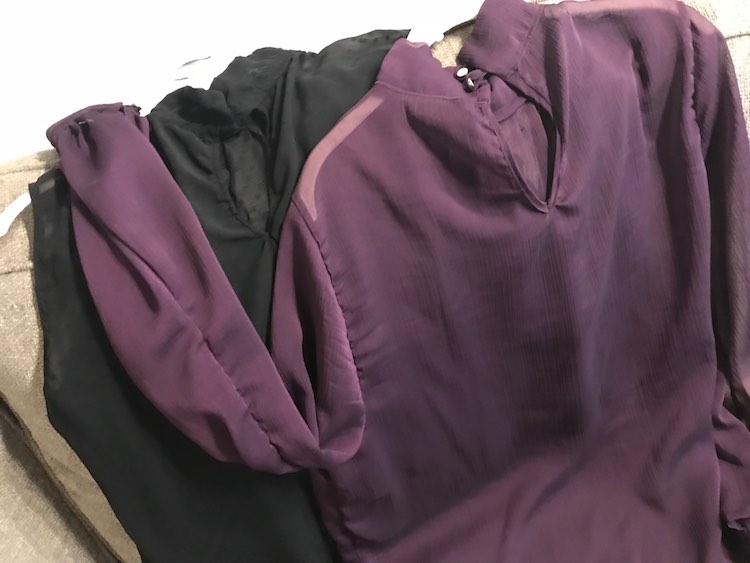
I hope you enjoy this pattern as much as I have. You can get the bundle including ladies, childs, and dolls sizing or get them individually: ladies (XXS-5XL), girls (newborn to 12 years), and the 18 inch dolls.
I’d love to hear from you through the comments below, on my Facebook page, or through Instagram.

